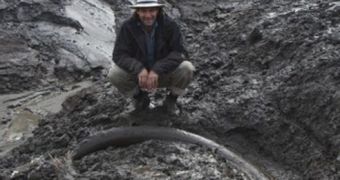Researchers at the University of Copenhagen Center of GeoGenetics say that a new analysis of six large herbivore species revealed an interesting aspect of Earth's environment at the end of the last Ice Age – nature and man conspired to cause the demise of large herbivore animals.
This was established after researchers conducted an in-depth investigation of fossils left over by these animals. The study was mostly focused on six species: the reindeer, the bison, the musk ox, the woolly rhinoceros, the wild horse and the woolly mammoth.
The two primary factors that led to the extinction of these species, investigators say, were human activity and large-scale climate fluctuations. Even as the Ice Age was coming to an end, overall climate patterns were shifting like crazy.
This was especially obvious in the Younger Dryas, a period of rapid cooling that occurred as temperatures were increasing about 12,800 to 11,500 years ago. The period was brief from a geological point of view, spanning about 1,300 years. However, its effects were extremely widespread.
CGG evolutionary biologist Eske Willerslev, the leader of the recent investigation, explains how humans and climate variability led to the eradication of cold-adapted animals, and also to placing other species on the brink of extinction.
The international team of experts the scientist coordinated included paleontologists, geologists, geneticists and climate modelers, who worked together in a multi-disciplinary approach to figure out what happened.
“The combination of approaches in this study – including the most modern molecular tools and painstaking fieldwork – sheds a powerful light on the complex interactions of humans, ecosystems and climate,” expert Hedy Edmonds explains.
He holds an appointment as the Arctic natural sciences program director in the US National Science Foundation (NSF) Division of Arctic Sciences (DAS) Office of Polar Programs (OPP). Details of the new research appear in this week's issue of the top journal Nature.
“Our findings put a final end to single-cause theories of these extinctions. Our data suggest care should be taken in making generalizations regarding past and present species extinctions,” Willerslev explains.
“The relative impacts of climate change and human encroachment on species extinctions really depend on which species we're looking at,” the investigator explains forward.
“We couldn't pinpoint what patterns characterize extinct species, despite the large and varying amount of data analyzed,” concludes University of Copenhagen expert and first paper author Eline Lorenzen.

 14 DAY TRIAL //
14 DAY TRIAL //